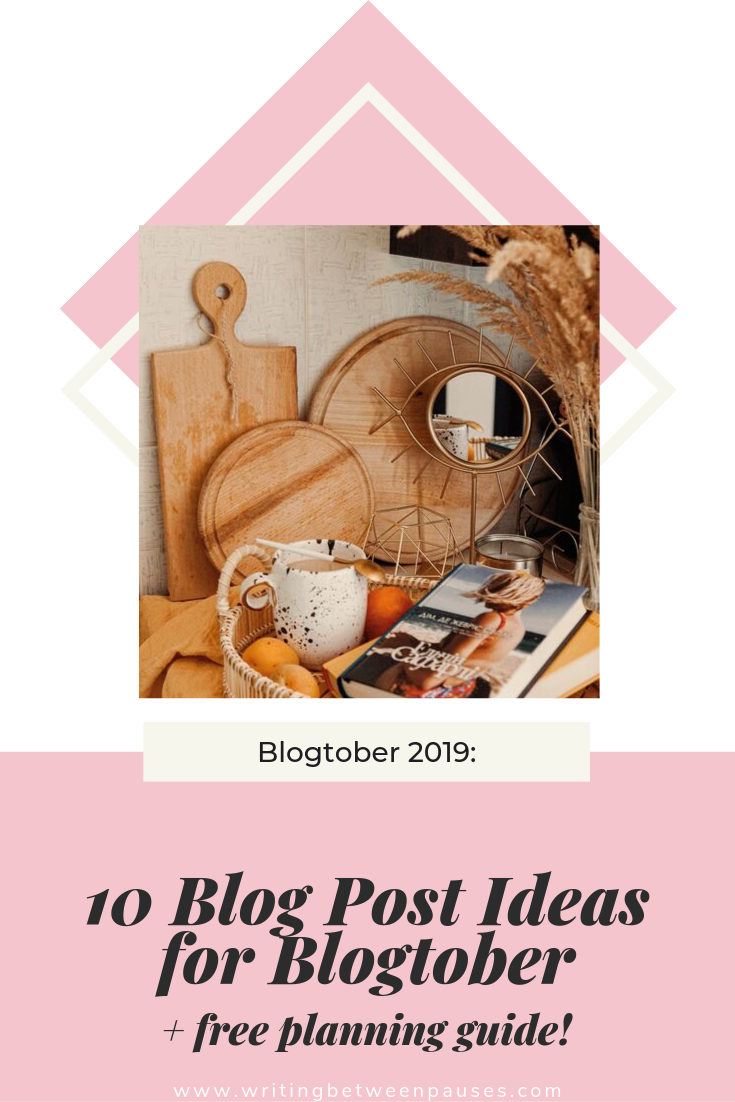If you’re a blogger who wants to make money, or a small business owner who wants to use your website to make more sales, then you need a sales funnel.
But for many people, they simply don’t know what that is. And we can’t create something to make our lives easier if we don’t know what it is or why we need it. So let’s talk about it. In this blog post, I’ll break down what a sales funnel is, the steps to creating one, how to automate effectively, and finally, provide a full example of a sales funnel.
First and foremost, before we talk about what a sales funnel is, let’s talk about why you need one. Let’s look at an example and I’ll use this example throughout the blog post. In our example, our business owner is named Sarah and she runs an Etsy shop that sells primarily personalized nursery signs, as well as other personalized art pieces and printables. Sarah has a decent number of sales on her Etsy shop, but wants to see that number increase—however, her art takes up a significant amount of her time, so she doesn’t want to have to spend hours of her day posting on social media, toying with ads, and more.
How can Sarah use social media and her existing blog and website effectively to increase sales?
The answer is a sales funnel. It will take some time to get set up and require a little bit of effort at first, but as time passes, she’ll be able to focus less and less time on it—and more time on her art.
Sarah needs a sales funnel because it will help drive sales to her Etsy store, give her a list of potential customers to turn to whenever she needs it, and give her control over that list of potential customers.
What is a Sales Funnel?
A sales funnel is a fancy way of saying: a system that drives potential customers from free content to paid content or products (or services).
The widest part of the funnel is the entry step: lots of people will enter, but not everyone will get to the bottom of the funnel. The middle part of the funnel is where you provide more and more targeted content. The bottom of the funnel is making a sale. That’s it!
However, a sales funnel won’t be the exact same for every single business or individual. Let’s talk about design.
How to Design a Sales Funnel
Think of a sales funnel as a customer’s journey towards buying your product. You want to be on their mind every single step of the way: invested in your brand, your product, and what both can do for them. For that to be helpful, you need to know who your ideal customer is and what motivates them.
What do they want from your product? From your content? What would be most helpful to them?
If you’re already making sales, what questions do you find yourself answering the most? What things do you notice customers needing?
And more specifically, besides your product and service, what is your customer interested in? What draws them in?
Once you answer all these questions, you can create a profile of an ideal customer. You’ve probably heard of these before; you can give this ideal customer a name, but you don’t necessarily have to. If you have more than one ideal customer profile, you can create a group of them. Once you have an idea of your ideal customer, you can design a sales funnel for one ideal customer (if you have a group of them as an example).
Let’s look at our example: Sarah sells personalized nursery signs, as well as other personalized art pieces. Her ideal customer for this sales funnel is currently pregnant women, aged 22-38, who enjoy: Pinterest, home design shows like Fixer Upper, and Instagram influencers like Elsie Larson. They want to design their nurseries to be beautiful, but functional, and want to learn more about design. That’s Sarah’s ideal customer; we’ll call her Helen. Now, what would be the first step towards getting Helen to make a purchase?
Step 1: Provide free content.
Starting with Sarah’s website, what content would Sarah post to attract potential customers like Helen? Here is what I would outline for Sarah:
Design-focused content
Nursery-focused content
Using Pinterest as a promotion method
Sarah might consider questions that her customers typically ask, such as: “Can I see some examples of nurseries where you have signs hanging?” or “What are the best ways to hang this sign?” She might consider content that:
Centers around customer photos of how they’ve styled their signs (in a style that would attract a potential customer like Helen)
Provides the best additional decor to style her products
With providing free content, regardless of your product and service, there is a thin line to walk between providing your services for free and providing just enough value that customers remain interested. Provide enough free content that aligns with Helen’s interests and Helen will become a fan.
Step 2: Create an email list where you provide consistent (still free) content.
The first time Helen finds a blog post from Sarah, she might get a pop up with a CTA to join Sarah’s email list. She might skip that for the time being. By clicking Sarah’s blog post from Pinterest, however, she’s still entered the funnel—she just hasn’t moved down a step. But let’s say a week later, Helen returns to that blog post; she wants to see those signs again and how customer’s have styled them in a farmhouse style.
She returns to Sarah’s blog post, because she saved it to a board on Pinterest, and gets that pop up again. She decides to sign up for Sarah’s mailing list.
Congratulations! She has moved down the funnel.
By providing great free content, Sarah attracted Helen as a fan. By having an email pop up, she invited Helen to join her mailing list and receive even more tailored, free content.
No matter what product or service you offer, you need an email list. Read that twice, please. It doesn’t matter if you started your website or blog yesterday. Sign up for Mailchimp or Mailerlite and get your email list going now. Why is that? Because with an email list, you own those subscribers. Your website can go down or Instagram might get deleted, but no one can take your email list from you.
Step 3: Use your email list to launch low-cost products.
Sarah uses her email newsletter to highlight new products in her shop and provide styling options. Every month, she styles a sample sign in a different style or creates a piece of personalized art to style. This keeps her potential customers interested and aware of her products.
She also occasionally offers discounts on products in her email. She might offer 20% off orders for Valentine’s Day or 31% off orders for Halloween. No matter what, she provides a way for her subscribers, and her subscribers only, to receive a discount on her products.
Your newsletter and email list should be a place for you to continue to provide valuable content for your potential customers: your list isn’t purely to sell to. If you only send them sales-focused emails, you will see a lot of unsubscribes. For businesses like Sarah’s that sell products, using a newsletter that highlights new products and continues to provide valuable, ideal customer focused information is the best option. However, for other businesses, sending a newsletter that only provides value for a while is your best bet; an example here would be if you are a coaching service, you would want to send essentially shortened blog posts that answer common questions or that advertise your (already free) blog posts. You would only occasionally send an email advertising your services. Let’s talk about why.
Step 4: Use that warmed up email list to sell high-cost products or services.
Using her newsletter to continue to provide value to her customers, while also advertising her products, is an important part of the funnel. Helen might just read the first 3 or 4 newsletters she receives; but in that 4th or 5th one, she sees a 30% discount for signs and decides to finally go for it. Congratulations! Helen has gone through the entire funnel!
But let’s go to that other example: if you’re a coach, what you’re selling is a service, not a product. It might cost more than a personalized sign. In this case, you would use your email list to warm up potential customers. Send them 4-5 emails in a drip campaign (this means they receive constant, small pieces of content designed to move them through your sales funnel) that aren’t about making a sale: these are purely to provide information. If you were a content coach, like I am, you might send emails about writing better Instagram captions, that show the data behind Instagram and making sales on Etsy stores, and more. Then, you might end that drip campaign with a single email that advertises your product or service. This gives your subscribers more of a chance to purchase from you—because they know you, they know your service, and they know that you know what you’re doing.
Think of your email list as a select group of people who love your blog content—but also want more from you. This is your chance to really flex your knowledge, show off your products & services, answer questions before they ask them, and then advertise what you do best. It might take a while to warm your email list up as much as you’d like, but having a plan for emails every month to provide the most information you can without giving your business away for free will keep them coming back for more.
What’s Next?
So, you know what a sales funnel is and we’ve walked through the primary steps. When creating your own sales funnel, it will probably be helpful to refer to this blog post and these steps. As you outline your plan, write out what you plan to do—and then write the steps of those plans separately. This might look something like this:
Step 1: Provide valuable content on setting up your first blog
Blog posts include: [topic 1], [topic 2], and [topic 3]
Promote on Pinterest and Instagram
Instagram hashtags include: [examples]
Instagram accounts to tag include: [examples]
Instagram story to promote needs hashtags [1, 2, and 3]
That will help you not just create a funnel, but create a plan for the content you want to create, including social media posts, Pinterest pins, and more. From there, outlining email sequences, what products or services you want to highlight first, and more will be incredibly helpful. If you have a network of fellow bloggers or business owners, asking them to promote your blog posts can be extremely helpful as well.
I’ve created a small template you can use to outline your initial steps.
Thanks for reading! I hope this helps you design a sales funnel to improve your business. If you need help with any step, please don’t hesitate to send me a note.




















